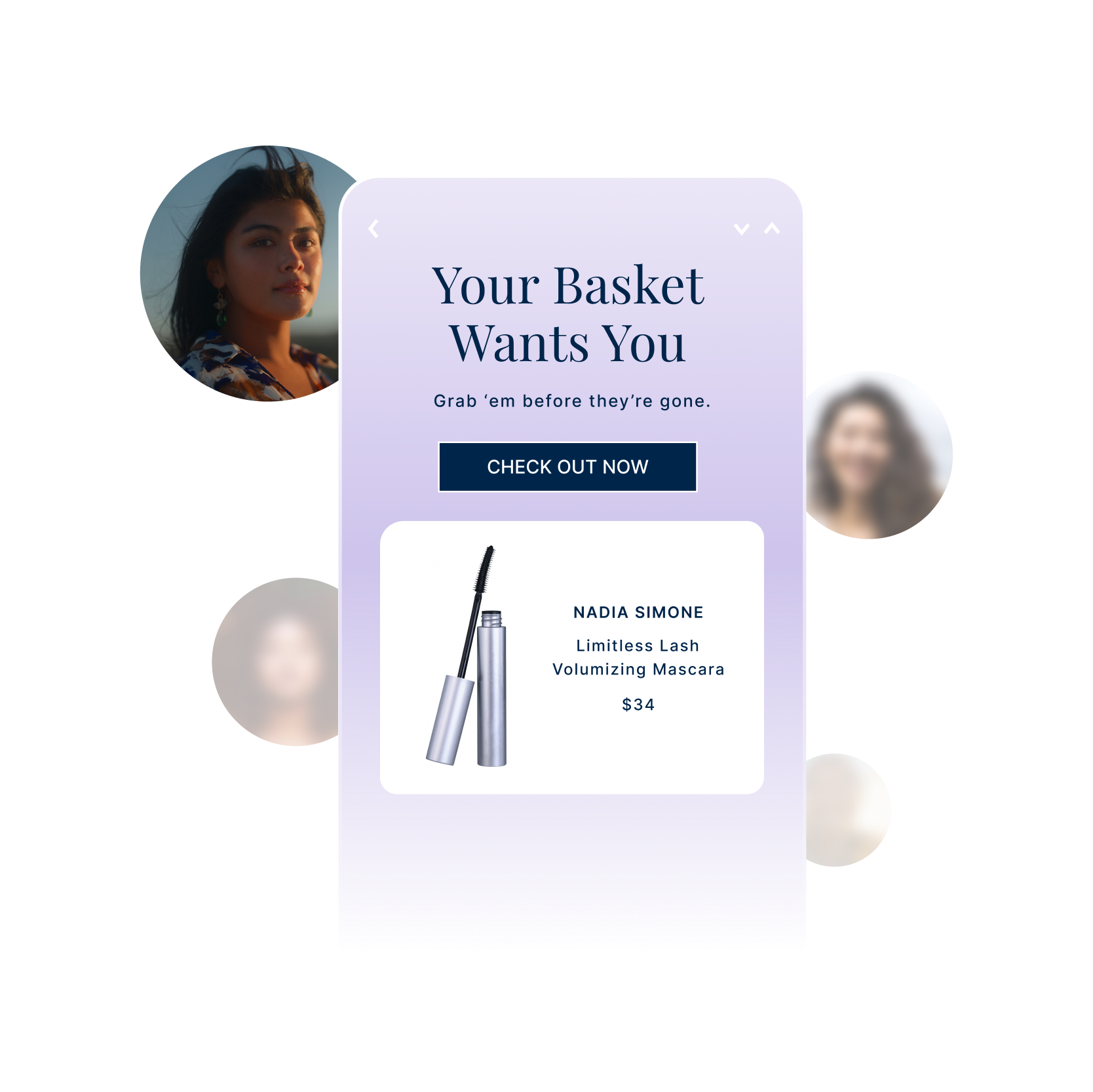Another year, another peak season, and another Black Friday Cyber Monday (BFCM) frenzy — sweeping through retail like a winter storm. And the numbers were staggering. Over the five days from Thanksgiving to Cyber Monday, Bluecore processed 8.8 billion shopper events, served 626.8 million site campaigns, and delivered 1.6 billion emails.
It’s beginning to look a lot like Christmas earlier each year, kickstarting holiday shopping. With so much activity, retailers turn their immediate focus to managing the rush, ensuring inventory is stocked, orders are fulfilled, and sales targets are met. But what happens after the storm? For many retailers, the flurry of new shoppers and one-time purchases can quickly settle into a quiet lull, leaving missed opportunities buried beneath the surface.
But high-growth retailers know the real opportunity comes next.
The holidays aren’t just about sales; they represent the start of a relationship. Every interaction, from browsing to buying, generates valuable signals about what your customers want and how they engage. The brands that turn those signals into actionable insights — creating personalized experiences, driving repeat purchases, and reactivating lapsed buyers — are the ones who transform seasonal gains into year-round growth.
So, as the holiday storm clears, the question shifts from “Can we survive the rush?” to “How can we capitalize on these new opportunities?”

Customer movement: The strategy for long-term growth
Black Friday and Cyber Monday bring the crowds, but customer movement turns them into your most valuable customers.
Customer movement is a strategy that shifts the focus from transactions to relationships, guiding shoppers along their unique journey from first-time buyers to loyal brand advocates. In doing so, it creates momentum, using each interaction as a stepping stone to deepen the relationship.
Whether it’s introducing a new customer to your loyalty program, encouraging repeat purchases with tailored recommendations, or re-engaging those who have gone quiet, customer movement creates a framework for consistent, profitable growth.
The holidays provide the perfect stage to set this strategy in action. With an influx of new customers and heightened activity, shopper signals are everywhere. Brands that tap into these insights and use them to nurture customer movement will retain more buyers and maximize the value of every customer touchpoint.
And the results are undeniable: Leaders who prioritize customer movement strategies increase customer retention rates by 4x to 12x. That’s the difference between one-time holiday sales and a thriving, loyal customer base.

Sustainable growth starts with shopper identification
How can a retailer turn their holiday shoppers into repeat customers and loyal brand advocates? It all begins with one crucial step: identifying who they are.
From the moment a shopper visits your site, every action — a product view, a cart add, or even an exit — generates valuable signals. Shopper identification turns these signals into opportunities, allowing brands to re-engage visitors, convert browsers into buyers, and build relationships with customers long before their first purchase.
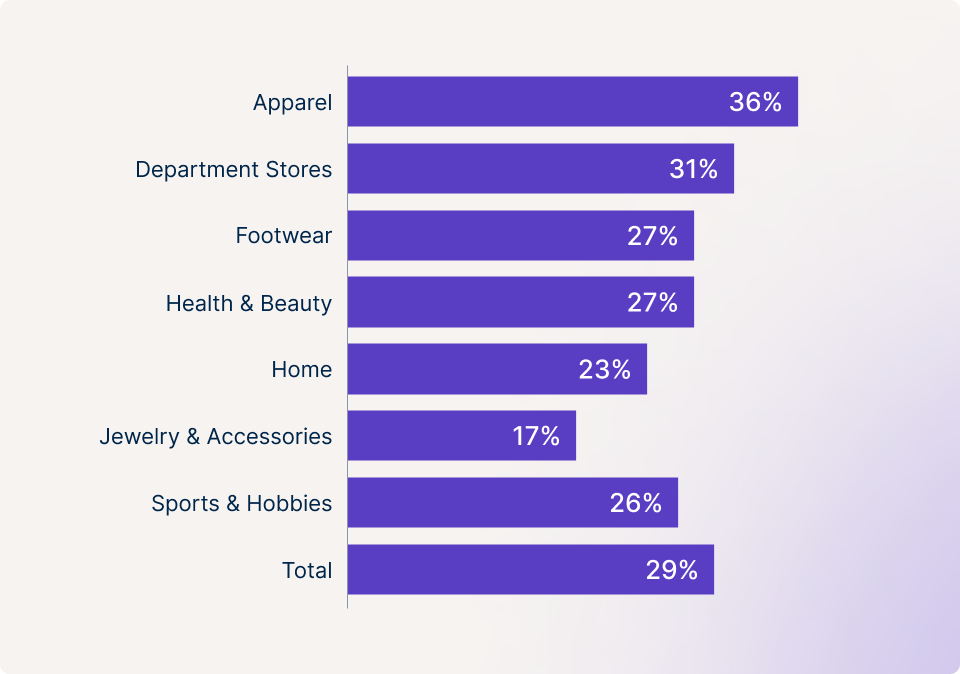
During Black Friday, the average retailer identified less than 30% of their website visitors, leaving the majority of potential customers anonymous and unreachable. These are missed opportunities to capture interest, establish a connection, and nurture shoppers through the buying journey. And for many retailers, they number in the thousands.
The good news? Retailers who invest in shopper identification strategies are seeing sustainable results. And more brands are taking notice, with identification rates increasing from 21% on 2023’s Black Friday to 29% this year. By leveraging tools like dynamic email capture, personalized overlays, and network-wide identification, they’re consistently boosting their identification rates. The result is a larger, more addressable audience that can be activated across channels with tailored messaging and relevant offers.
BFCM shoppers don’t need to remain one-and-done buyers. With effective shopper identification, they can become known entities, paving the way for more meaningful engagement and sustained growth long after the holiday rush.

Playbook: Turn holiday success into a growth engine
Frankly, it’s not enough to simply send a thank you note or promote your next sale. To transform a surge of seasonal shoppers into a steady flow of loyal customers, retailers need a framework that leverages the shopper signals collected throughout the holidays — signals that reveal who your customers are, what they value, and how to keep them engaged.
In the following steps, we’ll outline how to turn holiday momentum into lasting results, focusing on identification, segmentation, personalization, and reactivation. The goal? To build a sustainable growth engine where every interaction fuels the next stage of the relationship.
Segment holiday shoppers to refine your retention strategy
Not all shoppers are the same. Some are deal hunters who only shop during sales, while others may be testing the waters with your brand for the first time. To bring them back effectively, you need to segment them based on their behavior, preferences, and potential value.
How to segment your holiday shoppers:
- First-time buyers vs. repeat customers:
- First-time buyers need nurturing. Send follow-ups that introduce them to your brand story, unique value propositions, and product categories they haven’t explored yet.
- Repeat customers already know your brand, so focus on upselling and deepening their loyalty through rewards programs or exclusive perks.
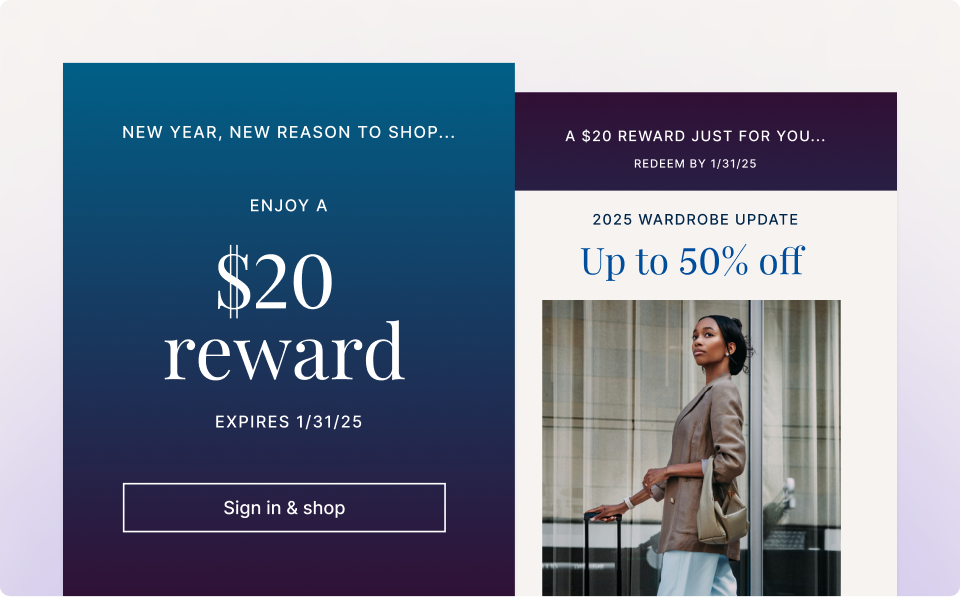
- Discount shoppers vs. full-price buyers:
- Identify those who are highly motivated by discounts and target them with personalized offers during future sales events.
- For full-price buyers, emphasize the quality and exclusivity of your products, avoiding over-discounting to protect your margins.
- Loyalty program status:
- If they’re not loyalty members, entice them to join by highlighting their potential rewards from their BFCM purchase.
- For existing members, reinforce the benefits of staying engaged by showing their current points balance and upcoming rewards.
- Category affinities:
- Segment shoppers by the categories they purchased during the holidays. If they bought home goods, for example, send recommendations for complementary items like decor or furniture care tips. If they shopped beauty, highlight replenishment opportunities or related product lines.
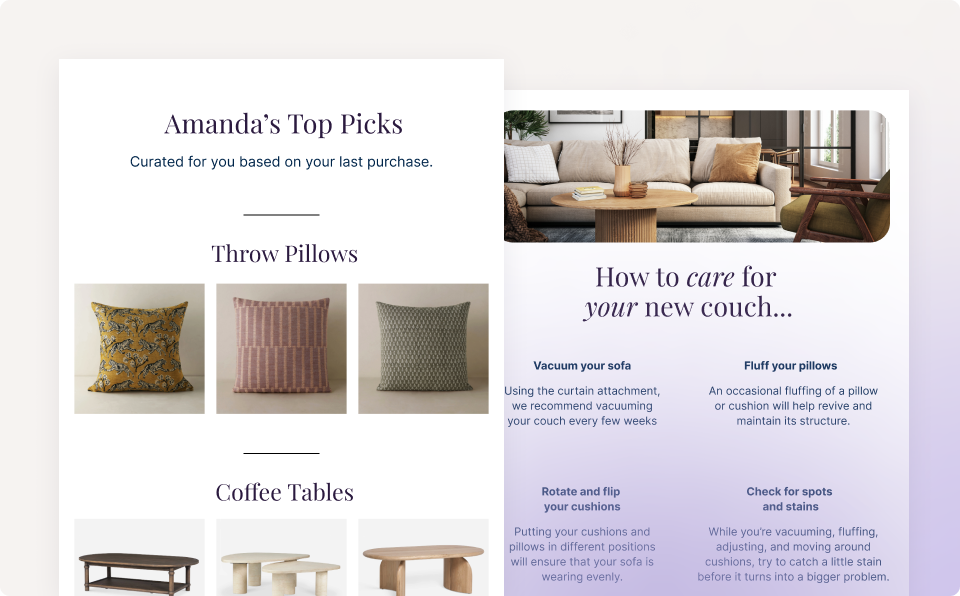
- Gift buyers vs. self-gifting shoppers:
- For gift buyers, send recommendations for future gift-worthy items or seasonal reminders for upcoming events.
- For shoppers buying for themselves, focus on new arrivals and items that align with their purchase history.
Organize and use your BFCM signals
The shoppers who flooded your site during BFCM left behind a wealth of actionable signals — from the products they browsed to the items they purchased (or left in their carts). The key to turning these one-time visitors into repeat customers is using that data to reconnect with them in meaningful ways.
Here’s how to do it:
- Activate cart and browse abandonment campaigns: Re-engage shoppers who showed interest but didn’t complete their purchase. Follow up with personalized emails or SMS messages featuring the products they viewed, paired with related recommendations or limited-time offers.
- Reconnect with anonymous visitors: Use retargeting ads and dynamic overlays to reach shoppers who didn’t provide contact information but interacted with your site. Highlight items they browsed or offer exclusive promotions to entice them back.
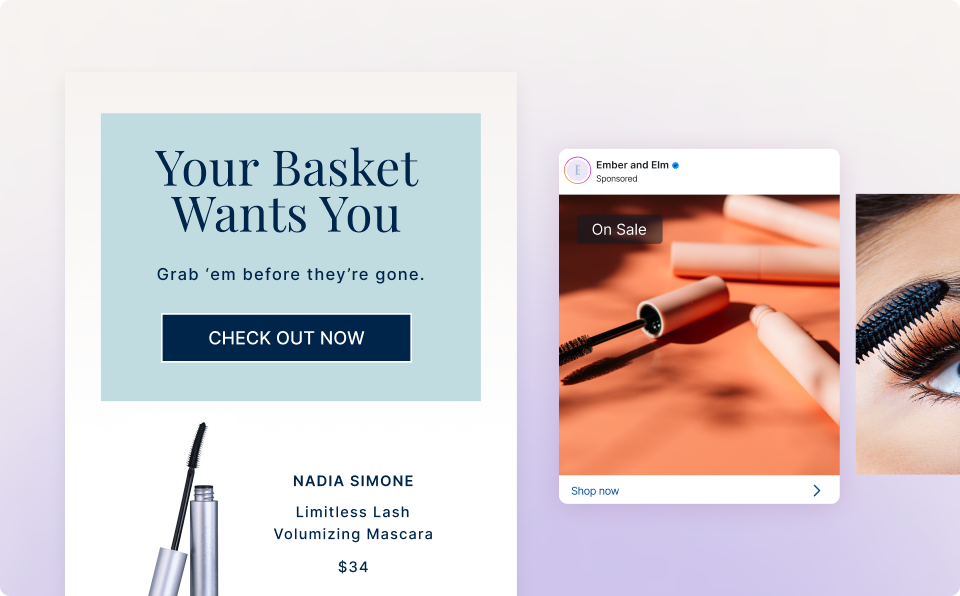
- Tap into seasonal triggers: Many holiday shoppers are gift buyers. Use follow-up messages to introduce them to categories they didn’t explore, such as seasonal clearance deals or products for themselves after gifting.
Want to dive deeper into the world of shopping signals? Check out the Bluecore Shopping Signals Guide for a breakdown of the different types of signals and actionable strategies to make the most of them.
Personalize post-purchase experiences to drive repeat purchases
The first interaction after a purchase is critical. For BFCM shoppers, it’s the bridge between a one-time transaction and a long-term relationship. A thoughtful, personalized post-purchase strategy can help bring these customers back, ensuring they don’t slip into the “one-and-done” category.
Here’s how to do it:
- Send tailored thank-you emails: Go beyond generic gratitude. Use the customer’s purchase history to personalize the message. For example, “We hope you love your new [product]! Here’s how to make the most of it” as the subject line. Include care tips, styling suggestions, or complementary product recommendations.
- Introduce them to your loyalty program: Highlight the benefits of joining, like exclusive discounts, early access to sales, or points for every dollar spent. Personalize the pitch based on their purchase value or category affinity.
- Upsell and cross-sell with smart recommendations: Use data from their holiday shopping behavior to suggest relevant add-ons or upgrades. IIf they bought a sweater, recommend matching scarves or hats. If they purchased a tech gadget, suggest accessories or protection plans.
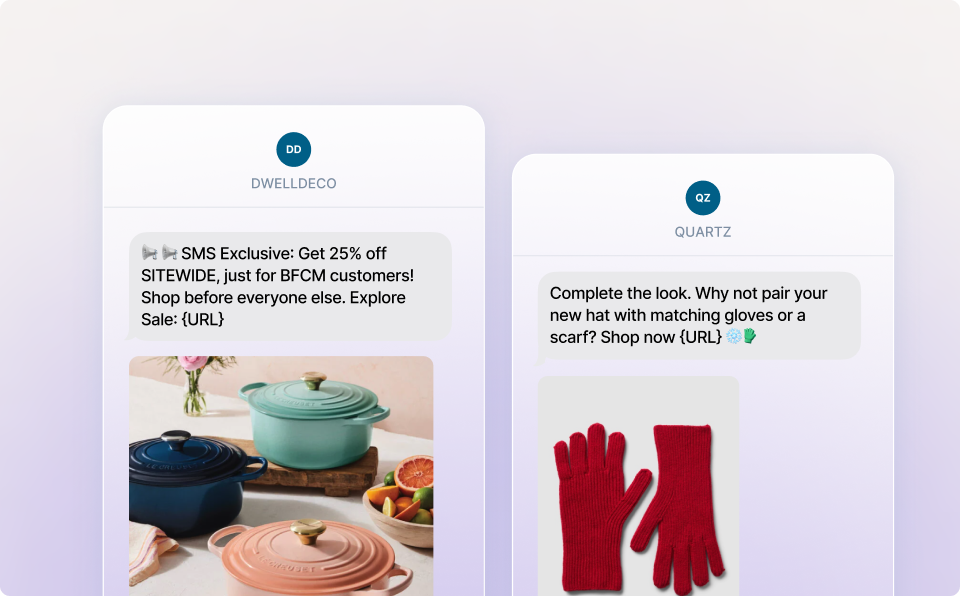
- Offer incentives for a quick return: Send time-sensitive promotions or coupons designed to bring them back within a specific window. Effective subject lines include “Enjoy 10% off your next purchase within the next 30 days” or Free shipping on your next order, just for BFCM customers!”
- Leverage replenishment campaigns: If they purchased consumable goods like beauty products or household essentials, schedule reminders based on the typical usage timeline to encourage reorders.
Run winback campaigns for at-risk shoppers
Win-back campaigns give you the opportunity to reignite interest and bring lapsed shoppers back into the fold. These campaigns work best when they’re personalized, timely, and offer compelling reasons to return.
Here’s how to build effective win-back campaigns:
- Reconnect with value-driven messaging: Send personalized emails or SMS messages reminding lapsed customers of why they shopped with you in the first place. For example, “We noticed it’s been a while since your last visit. Here’s what’s new and trending in [their preferred category].” You can also highlight recent product launches, improved features, or expanded categories that match their past purchases or browsing history.
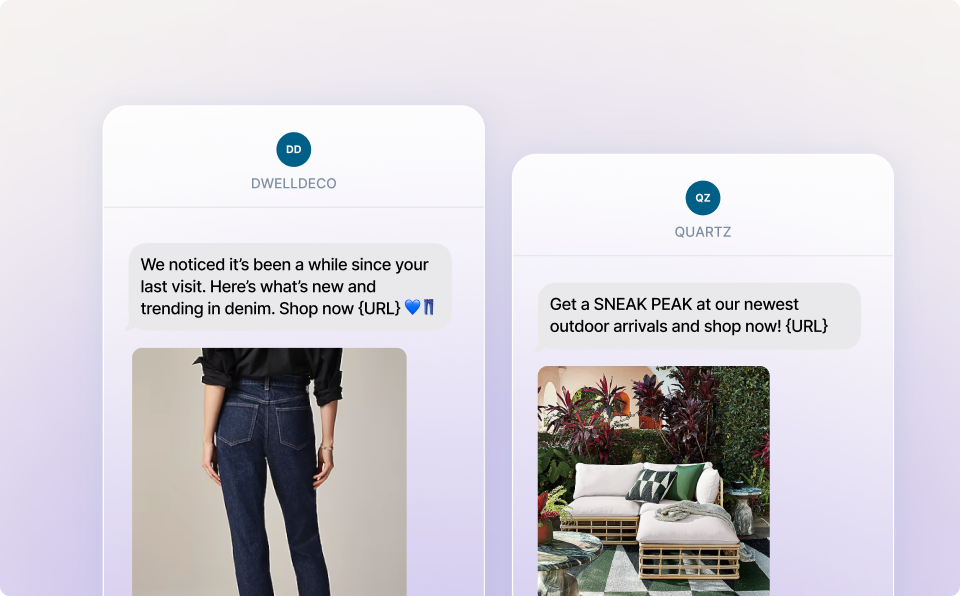
- Leverage exclusive win-back promotions: Offer special perks reserved for returning customers, such as free shipping or limited-time discounts on new arrivals. Tailor the incentive to the value of the lapsed customer to preserve your margins while enticing higher-value customers.
- Re-engage with social proof: Feature testimonials, user-generated content, or top-rated products to rebuild trust and excitement. A message like, “Customers like you love these top-rated items!” can remind shoppers of the value others see in your brand.
- Introduce timed exclusives: Limited-time campaigns, like “We Miss You” flash sales or early access to upcoming collections, create urgency and make customers feel valued for returning.
Looking for even more ways to win back lapsed customers? Check out the Bluecore Reactivation Roadmap for advanced strategies and proven tactics to re-engage your audience effectively.
Test and optimize your strategies
No two BFCM shoppers are alike, and testing your campaigns is the best way to ensure you’re using the right strategies to bring them back. By experimenting with different messaging, offers, and channels, you can continuously refine your approach and maximize impact.
Here’s how to put testing into practice:
- A/B test your win-back emails: Experiment with subject lines, visuals, and CTAs to see which combinations drive the highest engagement and conversion rates. For example, test whether customers respond better to emotionally engaging subject lines like “We miss you — here’s what’s new just for you” or informative ones like “See the most-loved picks of the season.”
- Optimize channel performance: If email open rates are low, test complementary channels like SMS, retargeting ads, or in-app notifications. Measure which channel combinations deliver the best results.
- Iterate on timing: Test different time frames for follow-ups. Do holiday shoppers re-engage within a month, or does a three-month reminder perform better? Use insights from your tests to refine your follow-up cadence.
- Experiment with personalization depth: Try varying levels of personalization to determine what resonates. For instance, test whether buyers engage more with product-specific recommendations or broader category-based offers.
- Analyze campaign incrementality: Measure how much incremental revenue your campaigns generate beyond what customers might spend organically. This ensures your tactics are not just reaching those who would purchase anyway but are also activating less engaged shoppers.

Looking ahead: Success in 2025
This year’s Black Friday and Cyber Monday campaigns might be behind you, but the work you do now sets the stage for even greater success next year. Every signal collected, strategy refined, and insight gained during this holiday season becomes the foundation for your future growth.
As you engage your shoppers year-round, keep an eye on what resonates most — which campaigns spark repeat purchases, which win-back strategies deliver the highest returns, and which segments show the most loyalty. By doubling down on these insights, you’ll be better positioned to approach your next holiday season with confidence and clarity.
Start thinking beyond the storm. With a customer movement strategy in place and continuous optimization of your campaigns, you’re not just chasing one-time holiday gains — you’re building a growth engine that keeps delivering season after season.
Ready to start the new year strong with your holiday shoppers?


